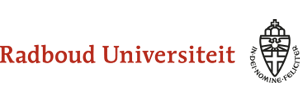American English Phonetics
Another American English Faculty Project
6.3.2 GA /uː/ and /ʊ/, and weak /u/
The GA vowel /uː/ is close, centralized back, rounded. The back of the tongue should be raised toward the soft palate (velum) – higher than for any other vowel in GA. The vowel is considerably more front than AN /u/, and may in fact lie halfway between AN /u/ and /y/ in quality.
GA /ʊ/ is a half-close, centralized back, rounded vowel. The tongue is slightly lower, the back of the tongue is slightly more forward, and the lips should be less round than for /uː/. GA /ʊ/ is short.
Weak GA /u/ may be somewhat shorter that /uː/, and will be monophthongal in most occurrences, as in situation, innuendo.
Advice for Dutch learners
Dutch learners often confuse /uː/ and /ʊ/, substituting Dutch /u/ for /ʊ/, which to GA speakers would sound about the same as /uː/. Remember that hood, stood, soot, foot, good, wood, should, could, and would are /ʊ/, which is pronounced with a vowel similar to the one in the second syllable of AN toegekoerd /ˈtuxəkurt/. Say this word a couple of times, and then cut yourself short just before making the /k/: hold the vowel, and this is as close as you can expect to get to GA /ʊ/ on the basis of a Dutch word. You should have less rounding than for AN /u/.
For GA /uː/ try and produce a quality between AN /y/ and /u/, and then make it diphthongal, like Dutch /oˑ/. Round your lips and push them slightly forward (/uː/ is also the most rounded vowel in GA).
/uː/ -Fronting
In some dialects /uː/ is fronted to a quality much like AN /y/, particularly after /j/. So the words use and cute would be pronounced: [jʉːt] and [kjʉːt] or [jyːz] and [kjyːt]. You may wish not to front the vowel quite like this.
